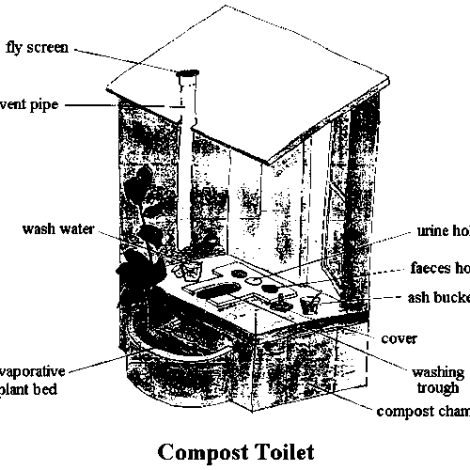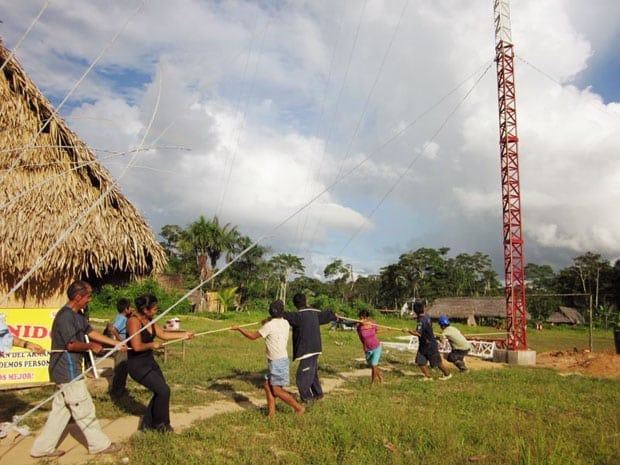Today is World Toilet Day celebrated by the United Nations and WASH practitioners all around the world.
Growing up as a little girl in India, I accompanied my uncle to many of his business meetings during summer vacation in Delhi. Those meetings invariably ended in a trip to McDonald’s or one of my favorite ice cream places. During one of those trips, my uncle’s meeting lasted much longer than expected. I was waiting for him, in his car, with my 5-year-old cousin and we needed to use the bathroom. I was about 11 years old, but I can remember that day like yesterday because of the desperation that I felt due to the absence of a toilet. Most of us take access to a functioning toilet for granted.
Unfortunately, this is not true for approximately 4.2 billion people in both the developing world as well as developed nations globally. Unavailability of a clean, working toilet presents its own sets of challenges for both rural and urban settings worldwide. I have seen first hand how in rural and urban regions in India, the lack of access to a toilet put communities, especially women and children, at risk. Women and children become vulnerable to attacks by stray and wild animals in rural areas, and prone to accidents by cars and trains, as open defecation mainly takes place near the railway tracks or secluded roadsides.
India’s Toilet Challenges
India’s massive five-year Swachh Bharat Mission, A.K.A. Clean India Mission, to construct latrines for all ended recently. The government claims that 100 million additional toilets have been constructed during this campaign. Most of these systems are not connected to any water-based sewer systems. Only 30 percent of India’s urban population has access to sewers, though most city plans include elaborate plans for sewerage systems. These sewer systems are supposed to be underground and inconspicuous. They should not need any manual labor to dispose of the waste, if built properly. However, sewers get blocked and need to be unblocked, they overflow and have to be cleaned out, and break down and have to be repaired. Several cities have introduced mechanization to fix major blockages and to avoid people having to jump into the sewer system when problems arise. And yet, sewer management remains a big challenge.
And the nation’s water challenges
Earlier this year, the Indian Government also pledged to provide piped drinking water to every rural home by 2024. It’s great that WASH – Water, Sanitation and Hygiene – is coming up high on the political agenda of India’s government. However, upon close observation, this plan will mean that a lot of resources will be spent on people living in densely populated (urban) areas, where piped networks are feasible. Many of these people have access to at least basic water services already. Outside of the cities, however, some 8 million people still rely on surface water. It is very unlikely that piped networks will reach these people.
In several Western countries, as well, considerable rural populations are not served by piped networks of water and wastewater. That includes the United States, where 44 million people in 2010 did not have conveniences such as running toilets. One wonders why India should push for full coverage with piped networks, which in practice means that the ones using surface water (and in general, people living in areas of low population density) will continue to be left behind.
Solutions exist, but they are not one-size-fits-all
India has shown impressive progress with a government-led initiative in sanitation. That approach has focused on lifting the ones left behind (the ones practicing open defecation) to at least a basic level of sanitation, mainly by constructing their own pit latrines. A push for universal coverage with sewered sanitation systems has achieved impressive results so far. However, just focusing on piped coverage for water and wastewater might not be a one-size-fits-all solution for India. Or for the United States, for that matter.
This is where solutions such as the services and products in Engineering for Change’s Solutions Library can provide alternatives to “Leave no one behind.” Ecosanitation is one such solution, which is a closed concept of sewage treatment that employs the planet’s natural hydrological cycle to close the gap between sanitation and agriculture. This type of solution can work particularly well in places where a piped supply is not possible and people still use surface water for water and wastewater supplies, e.g. in rural India or the United States. Such solutions can not only help solve the sanitation problem but also aid in establishing a circular economy.
Providing more than 4 billion people with sanitation sounds like a tall order at first glance. However innovative solutions such as the ones in E4C’s Solutions Library, combined with political will and policy instruments, can go a long way in fulfilling that goal and provide sanitation as a human right for all in the future.
About the Author
Pallavi is Engineering for Change’s WASH Correspondent. When not writing for E4C, Pallavi is a program and project manager, consultant, and global development professional living in New York City. Her interests range from environmental causes to education, and her personal pursuits include entrepreneurship, food, travel and yoga.

